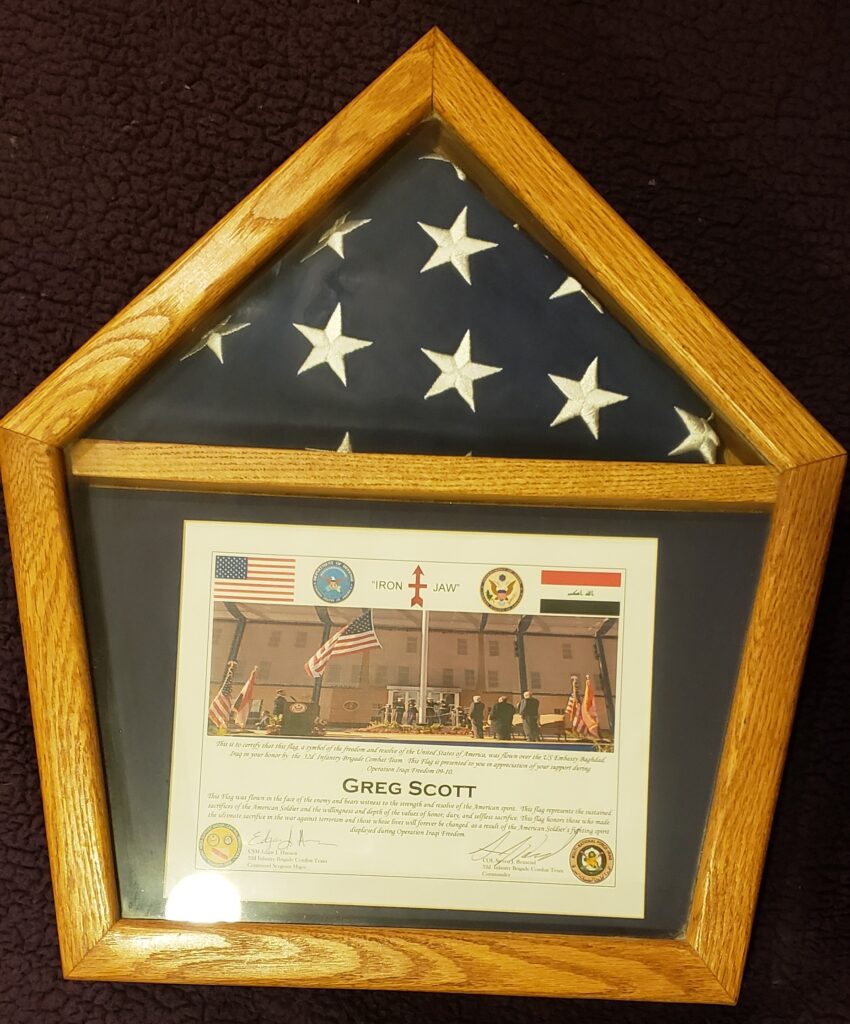
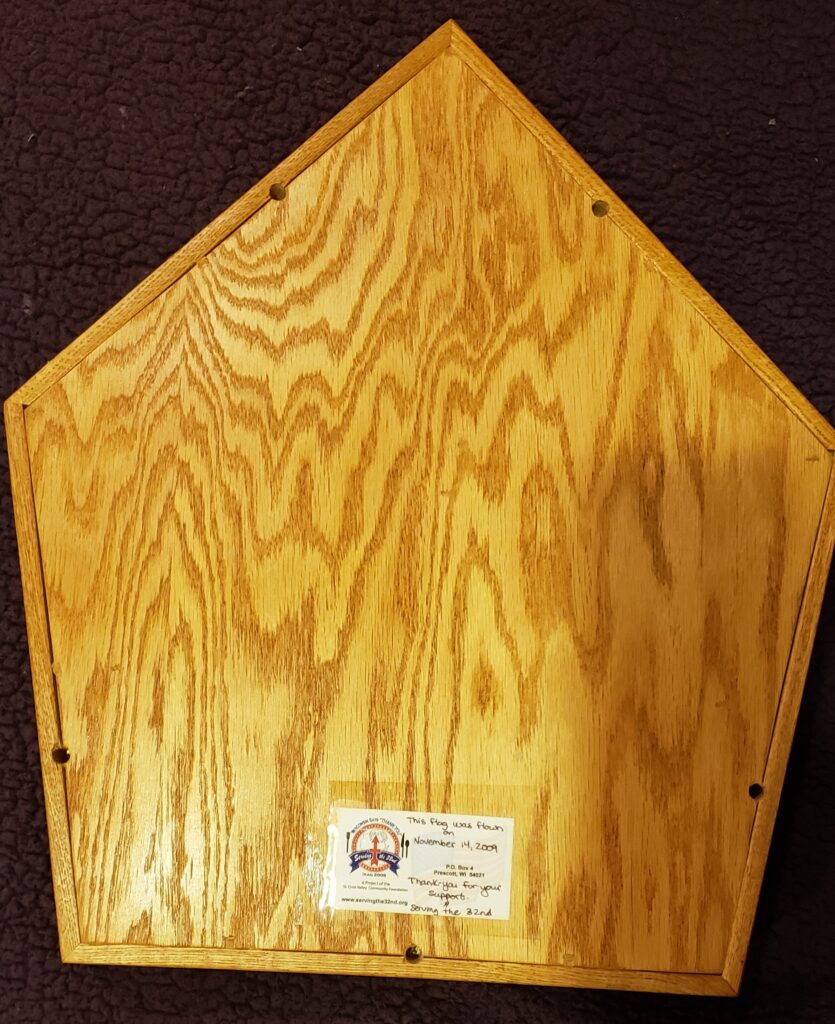
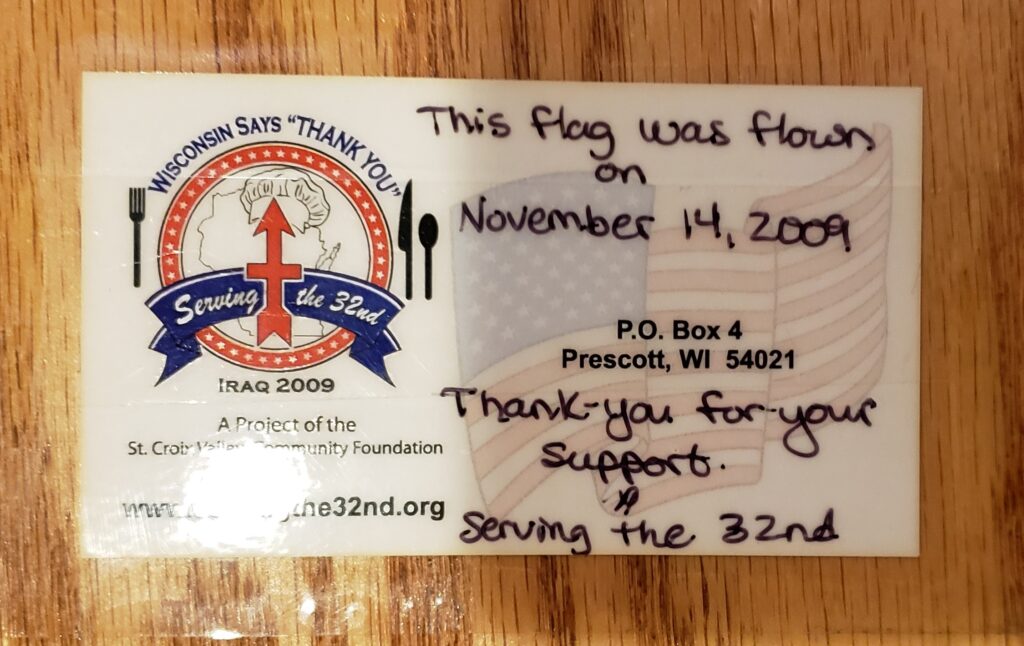
Like all Americans old enough to remember Tuesday, 9/11, 2001, I know where I was that morning. I had scheduled a 9:00 AM Microsoft certification test, and I was up early with last-minute preparations. My sister-in-law, Tammy, called and said a plane had crashed into a skyscraper in New York City, and to turn on my TV and watch the news. I did – and of course it was all over the news – and then I turned the TV off and headed out to take my test.
I passed my test. And then I came home and turned the TV back on. By then, the second plane had hit in New York City and much of the Pentagon was smoking rubble, I watched both towers collapse, and, like most Americans, the carnage horrified and angered me. But for me, and probably most Americans, they were images on TV. Nobody I knew died in the attack that day.
The day after 9/11, Wednesday, Sept. 12, I was scheduled to visit a customer in Owatona, Minnesota, about fifty miles South from where I live. I stopped that morning at my neighborhood gas station where drivers waited in line to buy gas at more than $5 per gallon. I left without filling up. Gas was the normal price in Owatona. And it was back to normal at my neighborhood gas station later that day.
Post 9/11 Shock and Awe
The United States invaded Iraq twenty months later, in March, 2003. I listened to it on the radio in my car, driving to a potential charter school customer in rural northern Minnesota. I had met with the school director and staff earlier and they told me their biggest problem was finding qualified teachers. And so I cooked up an idea to do video learning. Contract with teachers in the Twin Cities for subject matter expertise, connect the teacher to the class over an internet video system, and use a staff member physically in the classroom to keep order.
COVID introduced video classrooms to the public in 2020. I dreamed up the idea in 2003, and drove ninety miles to pitch it to this charter school director. Voice over IP was still new. Voice and video over the public internet was science fiction, but how hard could it be? I had networking expertise and figured I could make it work if I could find somebody who wanted it.
He didn’t show up for the meeting. His assistant said he left before our scheduled meeting because he didn’t like confrontation. My own private version of shock and awe.
But video over the internet opened too many possibilities for one mentally challenged charter school director to squash. Especially when so-called experts told me it was impossible. “It’s UDP. You can’t send UDP over the internet! It will never work!”
I made it my mission to prove the naysayers wrong. But first, I needed a video device I could afford. I found one at a St. Paul Chamber of Commerce meeting when a member company delivered a presentation about a communication relay service it offered for deaf people.
UPS at Midnight
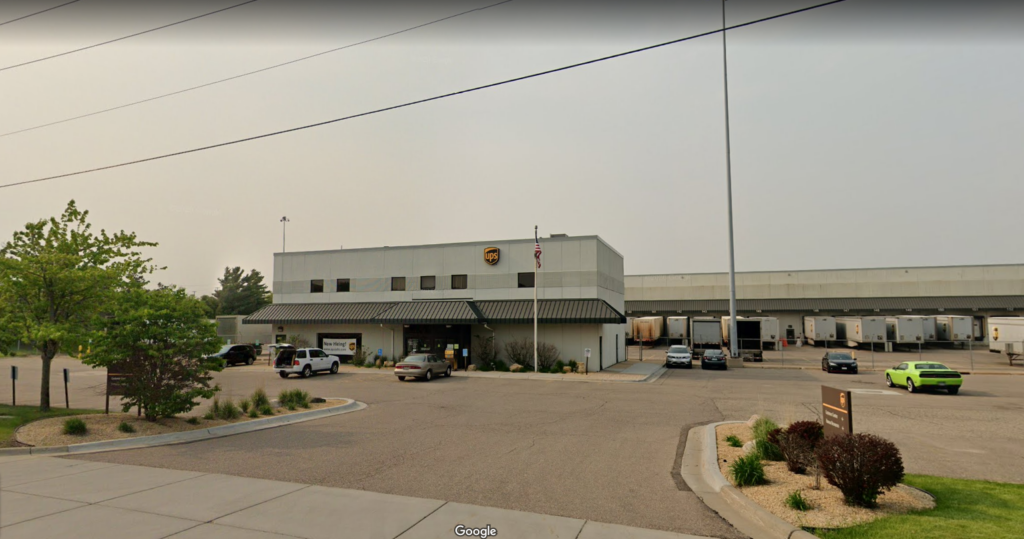
I visited that company and learned everything I could find out about the video device they used. Its price made it a thing of beauty, and so I ordered a pair from Frys Electronics Superstore over the internet. I checked my email at midnight a few days later and UPS said my package was in my local UPS facility, scheduled for delivery the next day.
Why wait? My local UPS facility is five minutes away by car and UPS loads trucks in the middle of the night. Maybe I could find somebody to locate my package. And so I drove over there. After midnight. And found an unlocked door.
I stepped inside and shouted hello. No answer. But an office light was on. Somebody tapped on a keyboard. I took a few more steps. “Hello. Hello?”
A voice behind me screamed. I jumped and yelled. And then she yelled. And I yelled again. Somewhere in all this, I turned to face her.
“How did you get in here?” She had fear and fire in her eyes.
“The door was unlocked.” Maybe this wasn’t such a good idea.
“What do you want?”
“Well, I was looking for a package.”
“You drove over here at midnight looking for a package? That’s what you want?”
“Yeah. I was hoping I could find it and bring it home tonight. I didn’t want to wait.”
Her eyes said relief. She didn’t have to spray me with chemicals.
She worked for the HR department and happened to be working late that night. And she had forgotten to lock the door.
We walked all over the UPS campus that night. The place looked like a Willy-Wonka chocolate factory, with conveyor belts everywhere. We didn’t find my package, but we tried hard. I thanked her and left. By now, it was so late it was early the next morning. UPS delivered it later that day. I wrote the nicest email I knew how to compose to her manager.
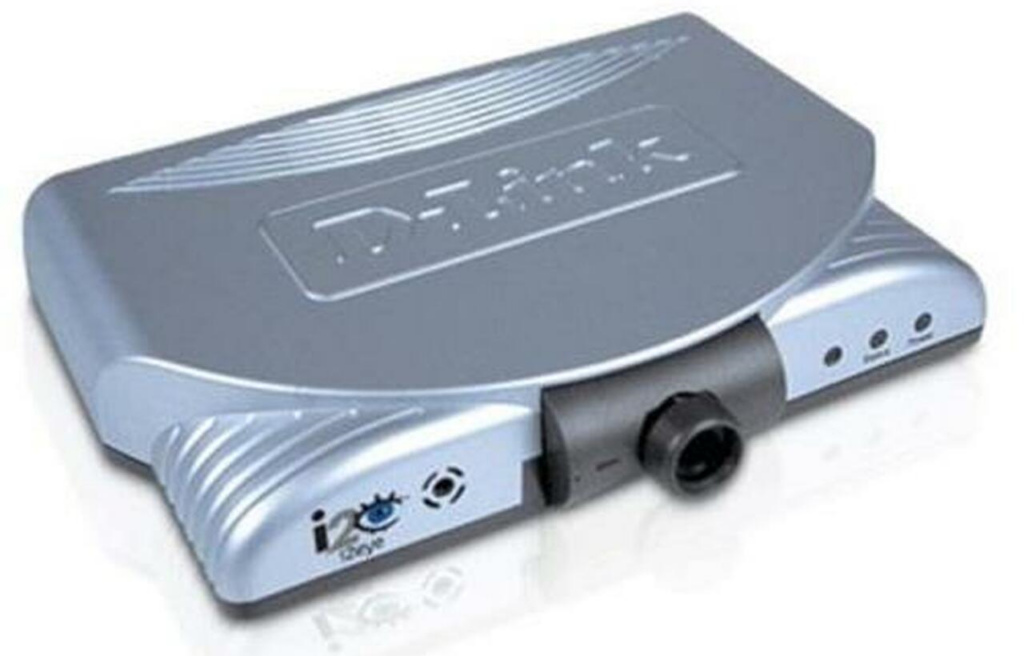
Overcoming Challenges
And then in early 2004, the US Marines sent my buddy, Mike, to Fallujah. Like me, Mike was an IT guy, and we committed to find a way to connect face to face over video while he was away. This was good for Mike because he could stay in touch with his family. And it was good for me because I finally found somebody who wanted it and I could prove the naysayers wrong.
Mike and I spent hours and hours and hours chatting over Yahoo Messenger. And after a few weeks, we were ready. Mike dialed my IP Address, the device I had set up rang, and… nothing.
It was maddening. He could call me, my device rang, but would not answer. Nothing we tried made it work. And there were no diagnostics to tell me what was wrong.
I didn’t figure out the problem until years later. For tech people, the H.323 standard initiates calls over TCP port 1720 and then uses a set of high UDP ports for the video stream back and forth. But the standard doesn’t specify which UDP ports, and so every device vendor uses its own. H.323 and NAT also don’t get along well, and my device was behind a NAT gateway. And that was why Mike’s US Marine video device would not talk to my low cost D-Link video device.
But I didn’t know any of this in mid 2004, and so I finally asked Mike what devices did the US Marines use? He said Polycom. Well, maybe I could get my hands on a Polycom device.
I called the Polycom toll free number and explained what we wanted to do, and to my complete surprise, the lady on the other end of the phone got excited about a post 9/11 marketing opportunity. After more calls and emails, Polycom agreed to donate a unit to our church if I would cooperate with any PR outreach Polycom wanted to do. I said yes on the spot.
But persuading the United States Marine Corps to say yes took some more doing.
Mike introduced me to his PAO. I didn’t know what a PAO was, but if she could say yes on behalf of the US Marines, that was all that mattered. I learned later that PAO means public affairs officer. PAOs don’t have authority to say yes, but they influence the decision. I spent hours chatting with her during her work hours eight time zones away, and convinced her that Mike and I were onto something good. She agreed to recommend her superiors say yes.
It took a bunch more emails and phone calls and late nights, but the US Marines finally said yes later that summer. I signed papers on behalf of our church, and Polycom sent me a brand-new, $2500 V500 unit for free.
And that was when I found out about the next hurdle. Internet bandwidth.
I needed at least 256 kb per second. 512 kb or 768 kb or more would have been better The 144kb IDSL feeding my house wasn’t good enough. Neither was the 128 kb feeding our church. I needed a bandwidth solution. Fast.
I contacted every telco I could think of. I lobbied Chamber of Commerce people. I also contacted the St. Paul Saints – maybe we could do something jointly. The St. Paul Saints said no. Most of the rest ignored me.
And then Rob Armfield with TDS Metrocom agreed to have lunch with me. Lunch turned into an entire afternoon talking about our project, and TDS agreed to donate a T1 to our church. TDS also put a T1 into my house. I had a sweet 1.544 mb of bandwidth. For free. Plenty to make this work.
Provisioning took several weeks, while I tinkered with my firewall to regulate the traffic. Thanks to Polycom PR outreach, the New York Times featured my project in a Thanksgiving, 2004 article. And thanks to TDS local PR outreach, the St. Paul Pioneer Press also wrote an article.
Success
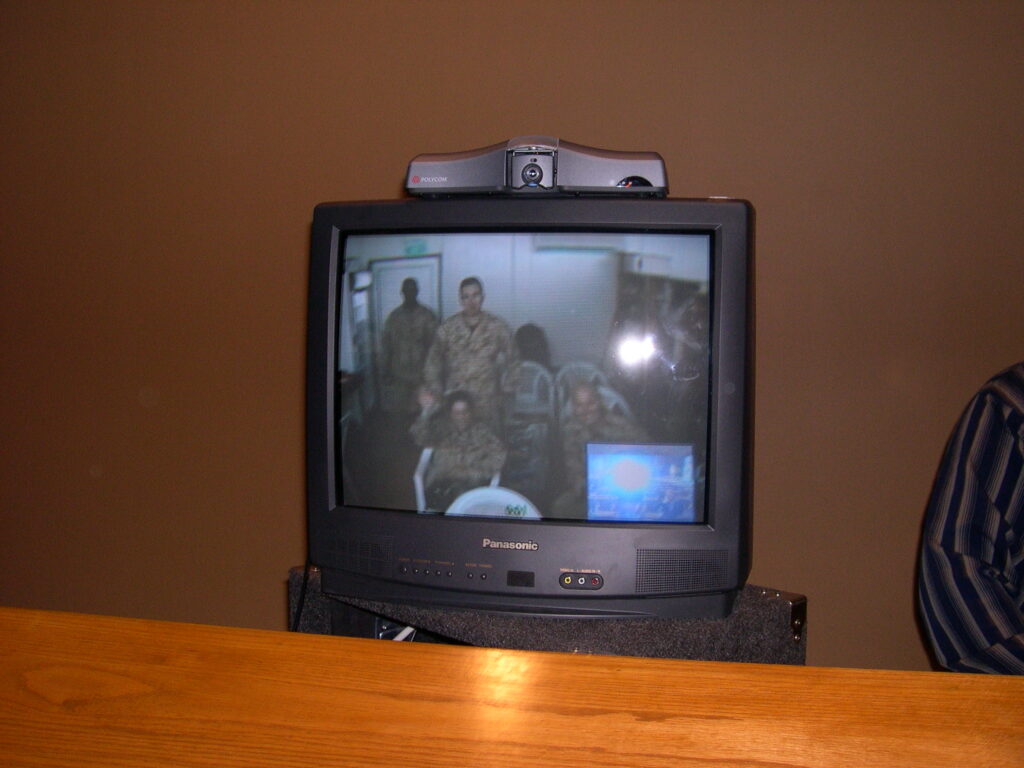
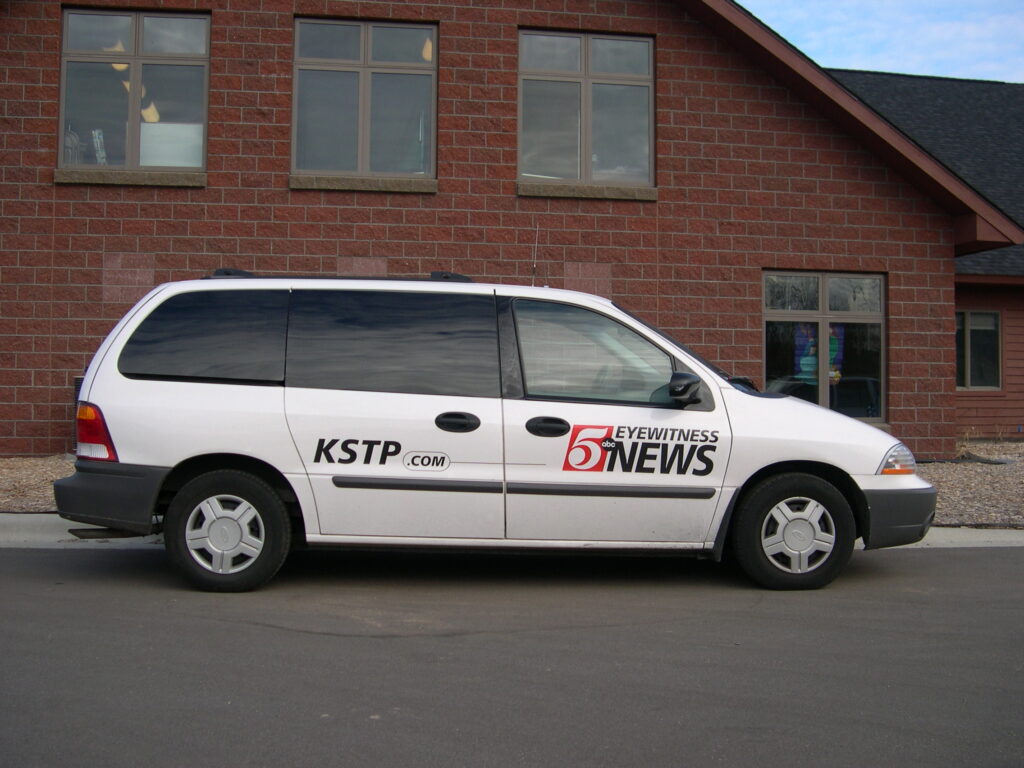
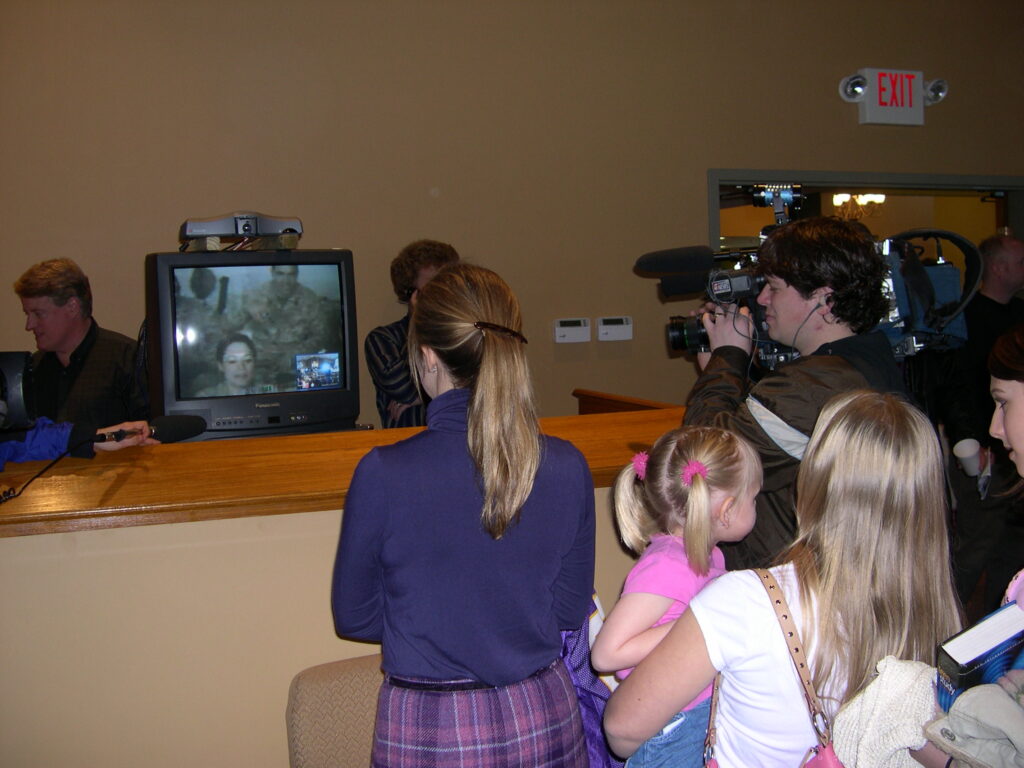
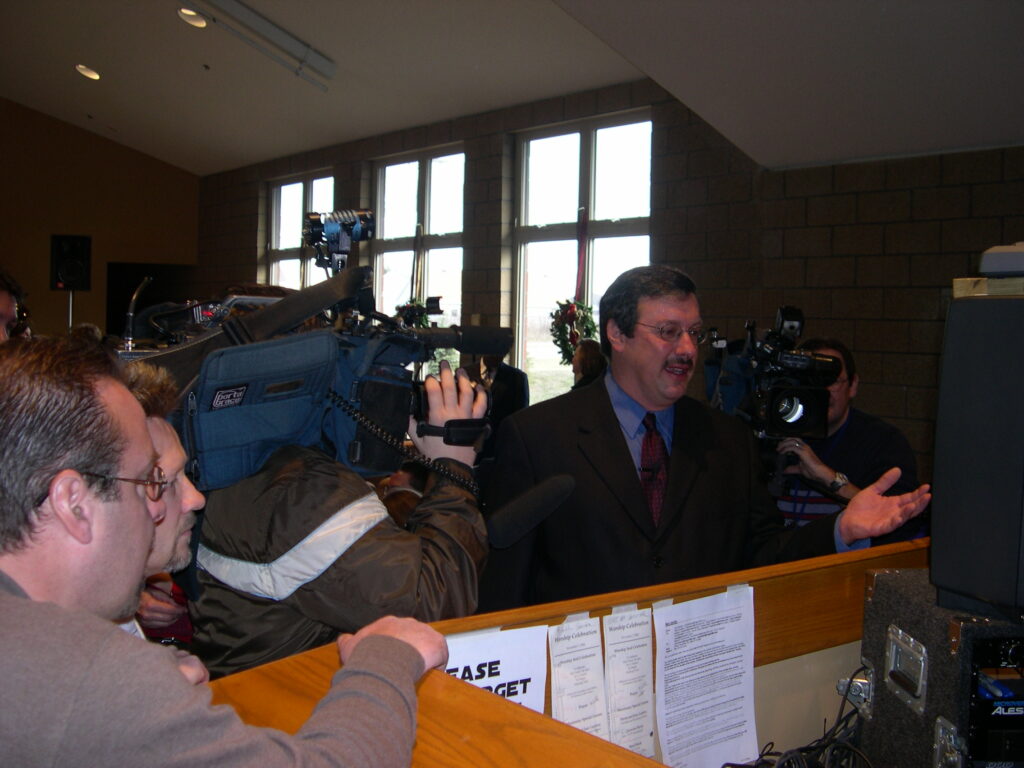
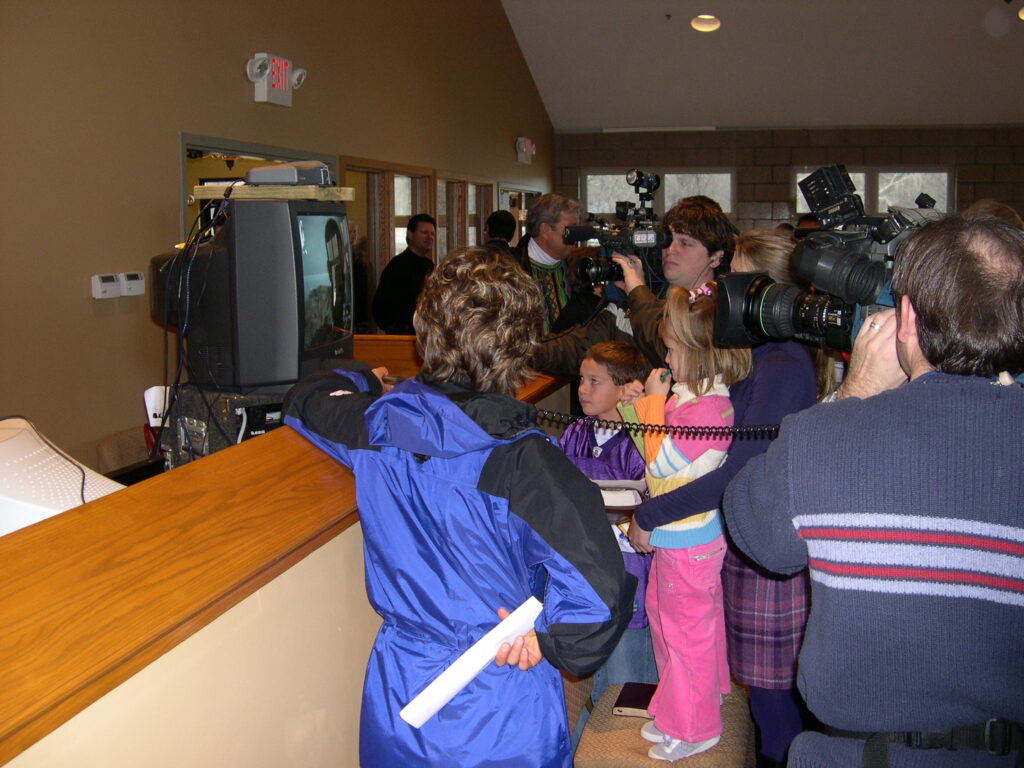
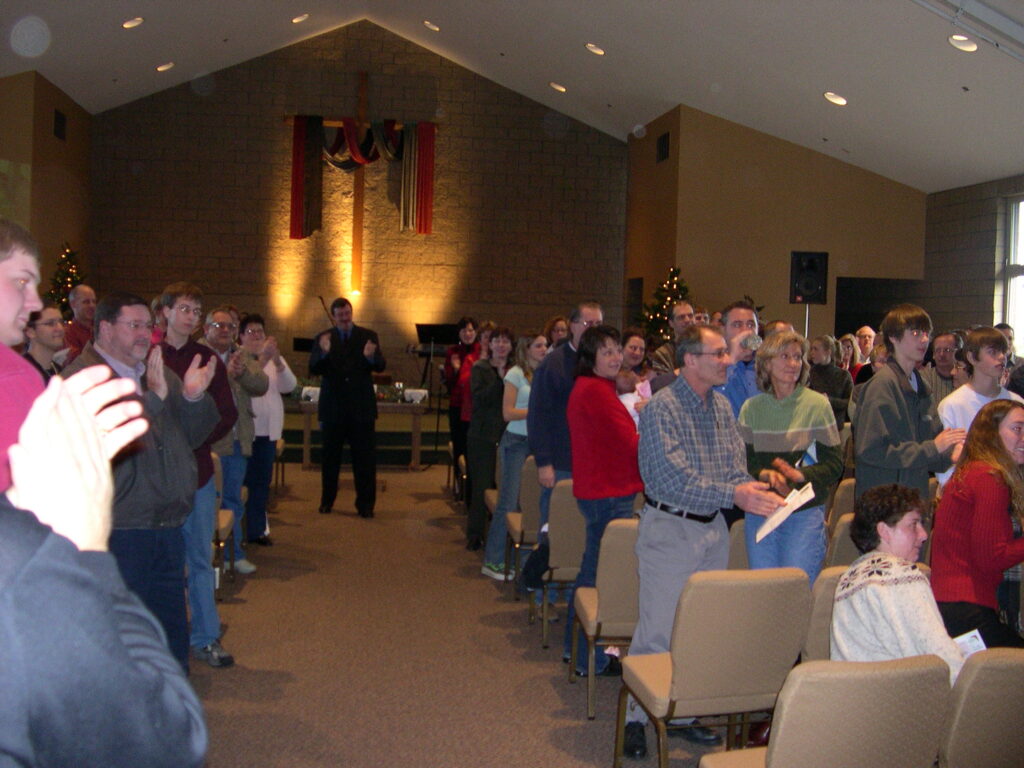
We went live on Sunday, Dec. 5, 2004. Mike and a few Marines attended church with us, inside a TV sitting on the sound booth shelf in the back of the church sanctuary facing the front. They were eight time zones away in a war zone, but for that hour, they were also inside our church with us. Camera crews from local TV stations jockeyed to get the best angle on our pastor delivering his sermon, and reporters held mics up to the TV to pick up any comment anyone in Iraq might have.
All the research, all the testing, all the lobbying, all the late nights – it all came together that day. Everything worked. I was ready to bawl my eyes out.
Two weeks later, we commemorated Christmas at our church by connecting a few other families. One family drove overnight from Wichita, Kansas to Eagan, Minnesota through a blizzard to spend a few video minutes with their son in Iraq. That day burned into my brain what these connections meant to the families.
For the next seven months, Mike sat in church with us every Sunday morning in Minnesota, Sunday afternoon in Iraq. In early 2005, a charter school needed to interview a new director candidate and approached me. The candidate was in Italy, the school was in Minnesota, and international travel is expensive. I connected them over the internet in a children’s classroom in our church.
Mike came home and we did our first large group event with the Minnesota Twins on Sunday, July 3, 2005. The Twins donated a few suites and we scheduled private family meetings all day. Mike’s wife, Toni, found out one young man had a 12th birthday that day. Twins staff brought him out to the pitcher’s mound and His dad wished him a happy birthday from Iraq on the big screen. A stadium full of fans cheered. More than a few cried. I was one of them because my firewall directed all that network traffic.
We were at the St. Paul Saints on July 4, and more than 10,000 people interacted live with a few Marines on the big screen in the outfield.
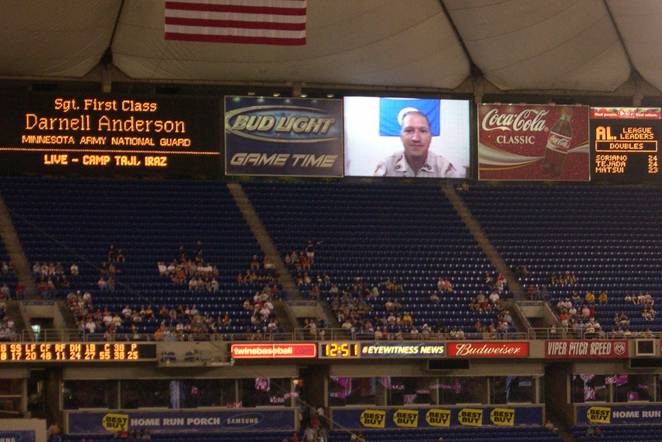
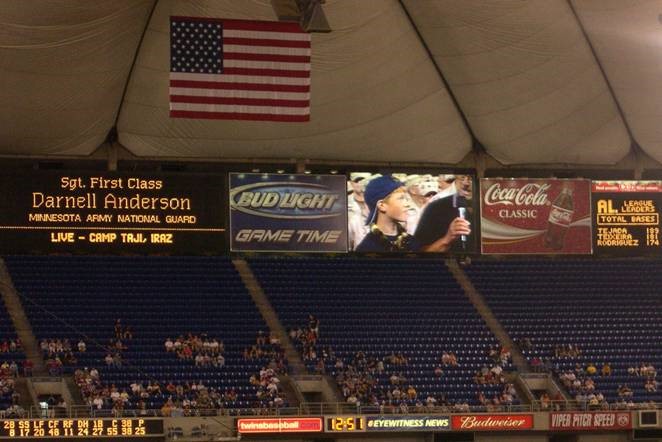
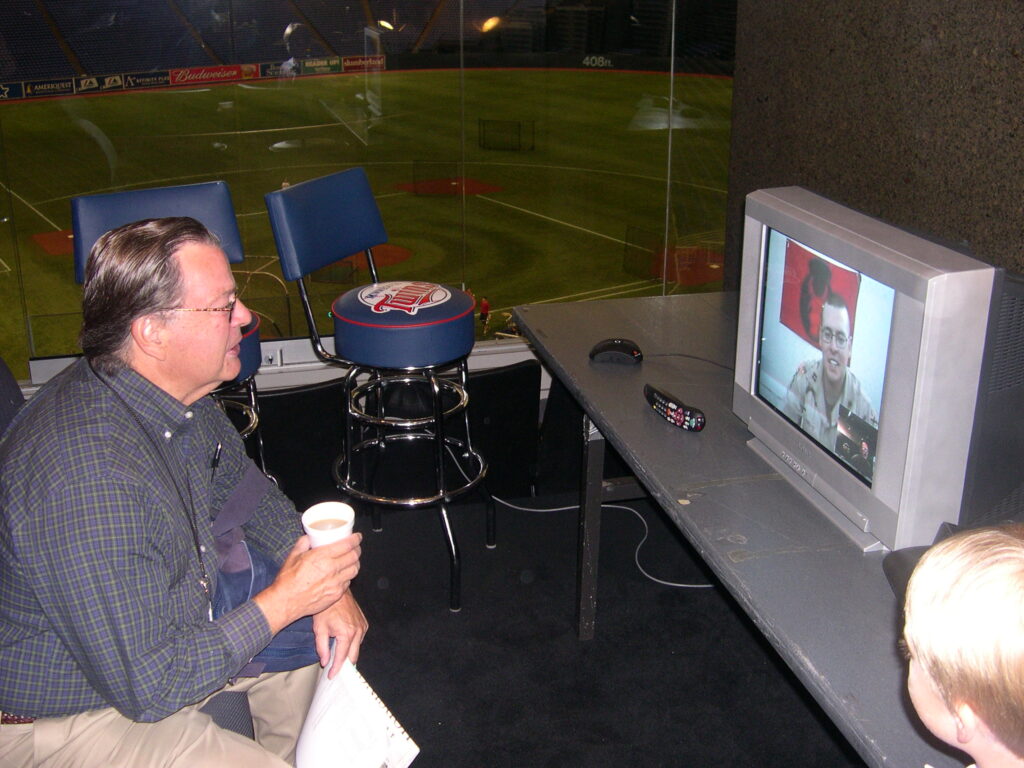
We did events with the Minnesota Vikings, Minnesota Gophers, more with the St. Paul Saints, and others. One time, we got word a wife was about to deliver her baby. The Fairview Hospital network support team turned its network upside-down, we hooked that Polycom V500 to a TV, and her husband in Iraq was beside her bed over video when she delivered. A nurse told us later, the husband was so into the birth, she had to turn to the TV and tell him to shut up.
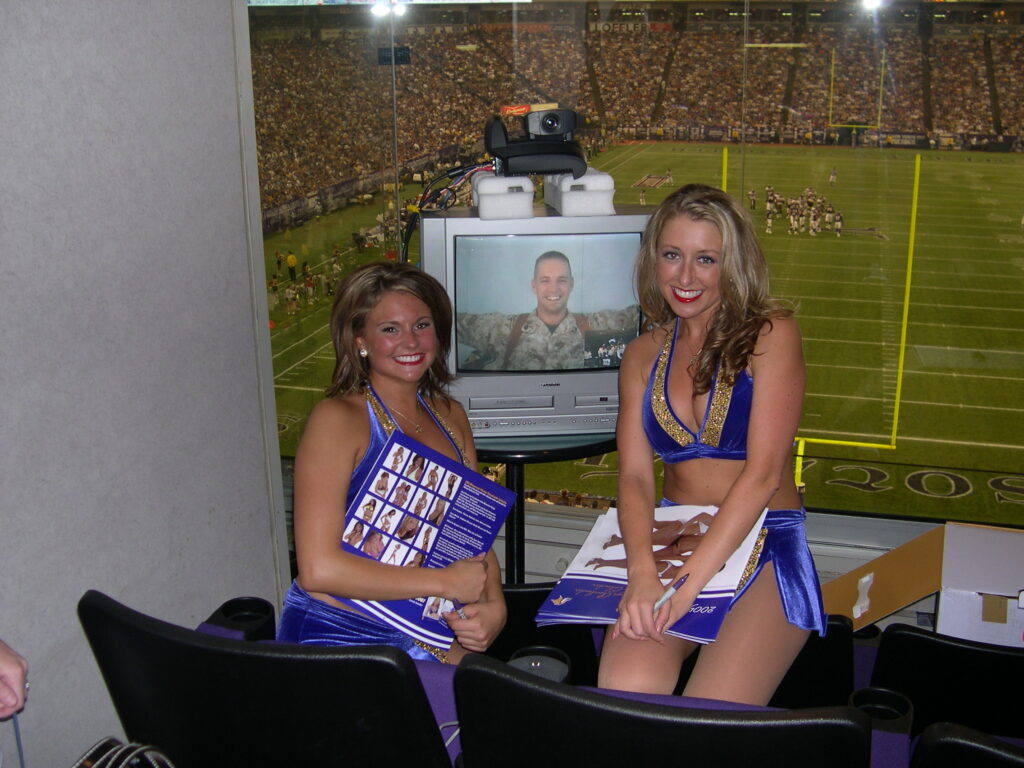
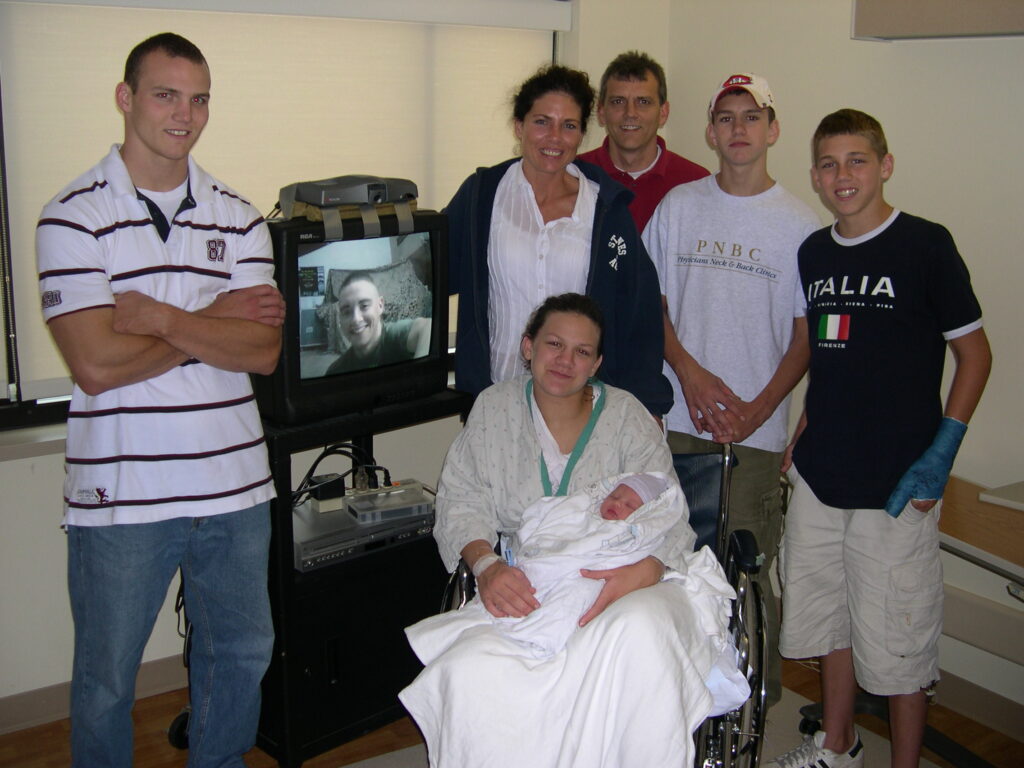
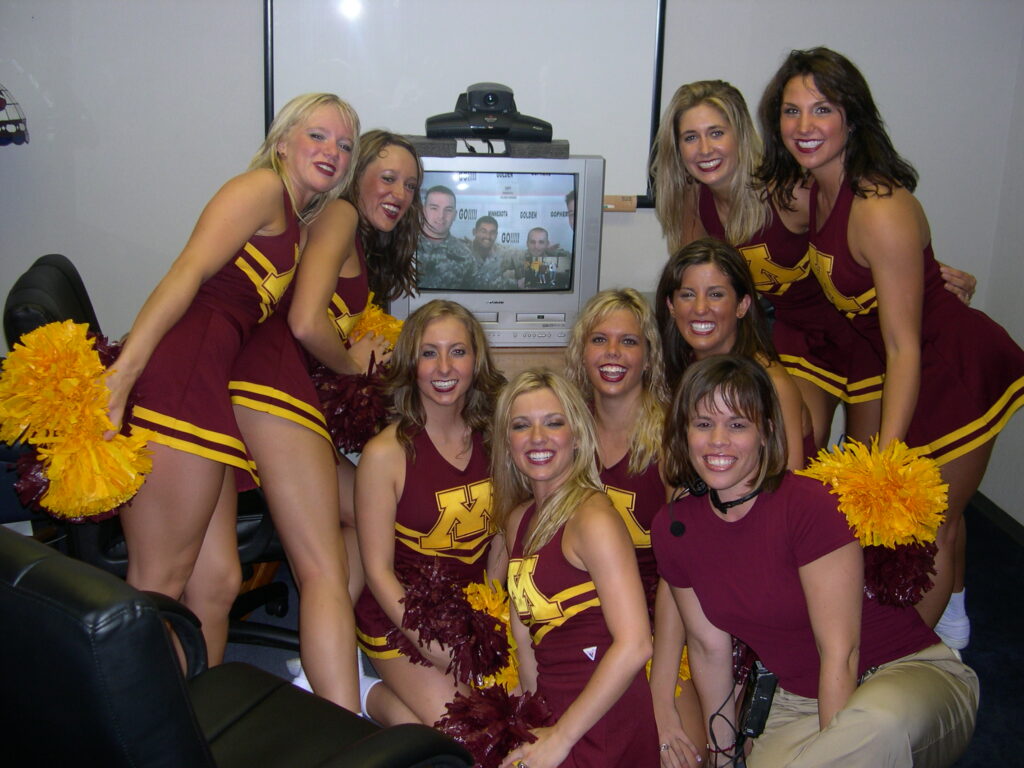
In 2008, Serving our Troops and I connected dozens of Minnesota National Guard families with loved ones in Kosovo. In May 2009, WCCO TV ran a story about my post 9/11 video conferencing efforts. A group putting together an event in Wisconsin called Tailgating with the Troops saw the story and contacted me. We connected 2500 Wisconsin National Guard families at an arena in Madison, Wisconsin in October. Play the video below in full screen.
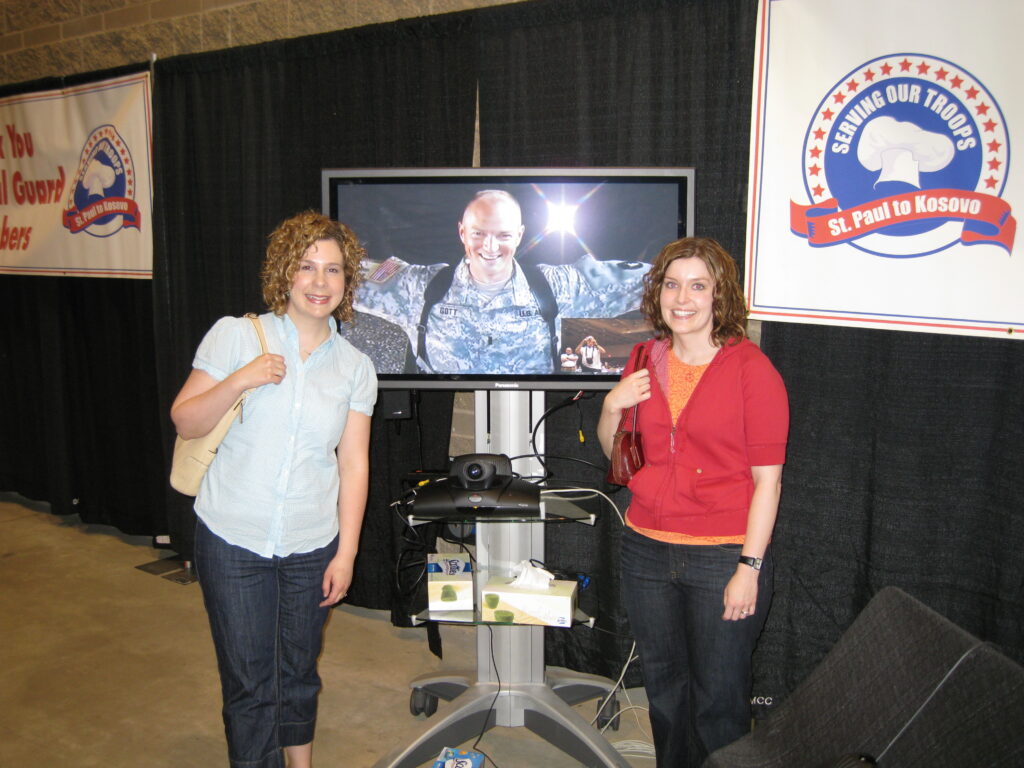
Since shortly after 9/11. Tee It Up for the Troops operates golf events to raise money to help military families. We connected families in both private meetings and large group settings for eleven years. Here is a page with links to a few highlights. In 2011, Fishing For Life approached me to do livestream connections on top of a frozen lake for an event named Holes 4 Heroes. As of this writing, I still do them. With every year, we push the technology envelope farther. Here is my Fishing for Life page with links to highlights over the years.
Post 9/11, All Good Things…
TDS Metrocom lost its Minnesota Twins and Vikings sponsorships to Century Link, and Century Link had no interest in working with a bald-headed nutcase with a better mousetrap. By 2009, H.323 video conferencing had become obsolete, in favor of early versions of today’s video calling services. This was about the same time I wrote a technical paper for how to do H.323 reliably. Story of my life; both too early and too late and never enough marketing power to convince the public to care.
Why?
A few people asked me why I did it. A few others condemned me for doing it. They called me selfish, greedy, and other more colorful names. One person told me I had no business setting up video meetings because without a big company behind me, I had nothing to offer. And my ears still ring from the tongue-lashing from the Freedom Calls Foundation director.
The complainers forced me to examine my motives when they accused me of trying to profit on the backs of our military. And I did hope to one day profit from all the expertise I developed. I pitched video gatherings for political campaigns, tele-medicine, telecommuting, distance learning, and all kinds of other scenarios. Everyone either ignored me or turned me down. A few got mad that I would propose something as radical as working from home. Nobody considered that a global pandemic would force business to embrace telecommuting a few years later.
But no family paid one penny for any small or large group video meeting in which I was involved. I am proud of that. I never served in the military. I’ve never gone hungry. I live in a nice house in the suburbs. And I’m pretty good with technology. Here was an opportunity to use the talent God gave me to give something back to people who defend my freedom. That’s why I did it.
Financial profit would have been nice, but I accumulated memories I’ll treasure for the rest of my life. I still tear up sometimes when I think about that twelve-year-old’s 2005 birthday on the pitcher’s mound with his dad in Iraq. He would have celebrated his 28th birthday in 2021. He probably has a family of his own by now and might not even remember that day in 2005. But I remember it.
The technology I pioneered is obsolete today, but in the early years following 9/11, it was a lifeline to those families. I was privileged to share a few moments with them. The families made it all worthwhile.
Post 9/11–Afterwards?
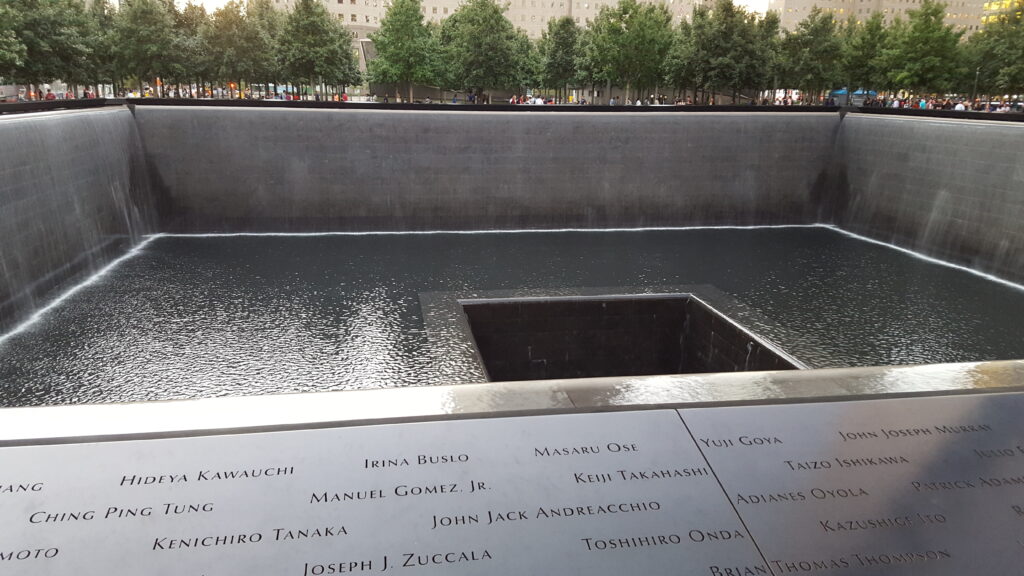
I visited the 9/11 memorial during a 2015 work trip. The Twin Towers site now has two large fountains and a memorial with names. Down the street, the 9/11 museum had just opened, but it was more than $20 to get in the door and I declined to pay that much.
Tuesday, 9/11, 2001 was a terrible day. 2996 innocent people went to work or caught a flight that morning, never realizing that nineteen suicide bombers backed by a global terrorist infrastructure would murder them. Twenty years later, the documentaries still make me tear up. I tried to honor the victims and our military families in the conflicts that followed the best way I knew how. I like to think I helped make at least a small difference.

For some reason I am just now seeing this post. I knew you were involved with the video conferencing stuff but didn’t know you had actually developed it! I always suspected you were a genius, Brother, And this proves it. Am so proud of you and your good heart.
Well, wait – it’s not like I developed video conferencing. I built some cool networking stuff to make it work well over the public internet of an earlier era. It’s a bummer that nobody cared. Too bad I’m not a marketing genius.
I never realized back then what all those hours and all that work was for, and what a HUGE deal it was for these soldiers and their families.. As an adult with children of my own and also knowing some of the limits technology had back then, THIS really was HUGE. I didn’t get it but I do now… thank you
Something to be SO PROUD of. You helped people connect in a troubling time because of your passion to help others, and challenge yourself when it comes to innovation and your tech savvy. Sometimes the hours and days we spend on projects are not recognized as they should be. The true REWARD is knowing we MADE a DIFFERENCE in a time of need for SO MANY. Knowing your own worth makes us wiser and stronger.